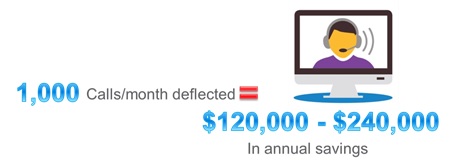
Help Me, Help You!
It’s happened to everyone. It’s nothing to be ashamed of. It’s not really your fault. Everyone has a personal tale of a bad customer service experience. I know I have. Some have haunted me for days or weeks as I tried to wrap my brain around how I could have handled the situation differently to achieve a better outcome. And it’s costing US companies $83 billion/year in defections and abandoned purchases. I’d like to be sympathetic to the situation. Companies are human too, right? And humans by our very nature make mistakes sometimes. The point is to learn from our mistakes, make amends, and move on. Then why does it keep happening and what can companies do differently to “turn that frown upside.”
This week, I shared some thoughts hoping to help organizations who want to take customer retention seriously in a brief presentation at the Customer Growth & Retention Summit. If you don’t have 45 minutes to spare, here's some highlights.
Retention Has a Higher Return than Acquisition
For as long as I've been involved in customer service, I've understood that for every dollar spent on advertising, you can expect to see five dollars in return. But every dollar you spend on good customer service can return over sixty dollars. I’ve had this statistic stuck in my head for so long; I can’t even remember the source so forgive me for not citing it. Essentially, good customer service results in more repurchases, renewals, upsell and cross-sales. I realize companies don’t set out to offer a “bad” experience but when you amplify that experience rapidly through social media, you see numbers like “$83 billion in loss.”
One Simple Step toward Higher Customer Retention
If you had a way of cloning all of your customer support staff, would that solve your problem? Probably not! You’d still have to pay them and probably feed them too. But what if you could create an online customer support community, and invite your customers, partners, and employees to participate? The fact is that more and more companies, especially B2B organizations, are taking the right steps to incorporate product support communities into their overall digital web strategy because they realize there are lots of smart people who want to be a part of the solution. Sure, there is an investment there. But the ROI can be addressed pretty simply. So if you can stand-up an online community and staff it with at least one dedicated community manager who is connected to the rest of the smart people in your organization – specifically, your support staff, for less than the cost of 1,000 deflected calls, then you’ll break-even at a minimum. More than likely, you’ll see a higher number of deflected calls since I was being conservative.

Don’t behave like a cable company
If you work for a cable company, I’m sorry if I upset you but I want to share a story from my colleague, Linda. She told me about a frustration she is having with her cable company. Her service was down and she wanted a reduction in her monthly bill during the outage. She spoke to three different low-level minions who either transferred her to billing, told her "we'll take care of it" yet did nothing or said “no” and something about “company policy” which is never the right thing to say to a customer, by the way. So Linda did what any smart consumer does, she took her beef to social media. Here’s the irony. The cable company responded immediately with an apology and an offer to refund her money. So they paid for all those calls from Linda into their Customer Service Center (probably costing $300-$600 total) and the software that listens to online for issues and sends an alert as well as the social media manager who had to tender the apology and refund her the $50 for her bill. Sadly, they will potential pay even more in defections by other customers who saw Linda’s original complaint but did not see the reply.
Why Not Create a Community In-house?
Now imagine if that same cable company had a customer care community on their website. Linda could have first searched their website to see if there was a known outage. Perhaps she could have seen that the company was already aware of the issue and was working on it and would be proactively refunding their customers for the inconvenience. Linda never would have called the company and rather than post a complaint on social media, perhaps she would have posted a “thank you” right on the company’s website. Now imagine if she just had a question. Maybe she wanted to know if a universal remote control would work with her cable box. Probably a hundred other customers had the same question and would have not only told Linda how to set it up but might have even given her the link to the eCommerce site that sold the remote they recommended.
I’d love to hear about your ideas on how companies can do a better job retaining their customers with an online community.